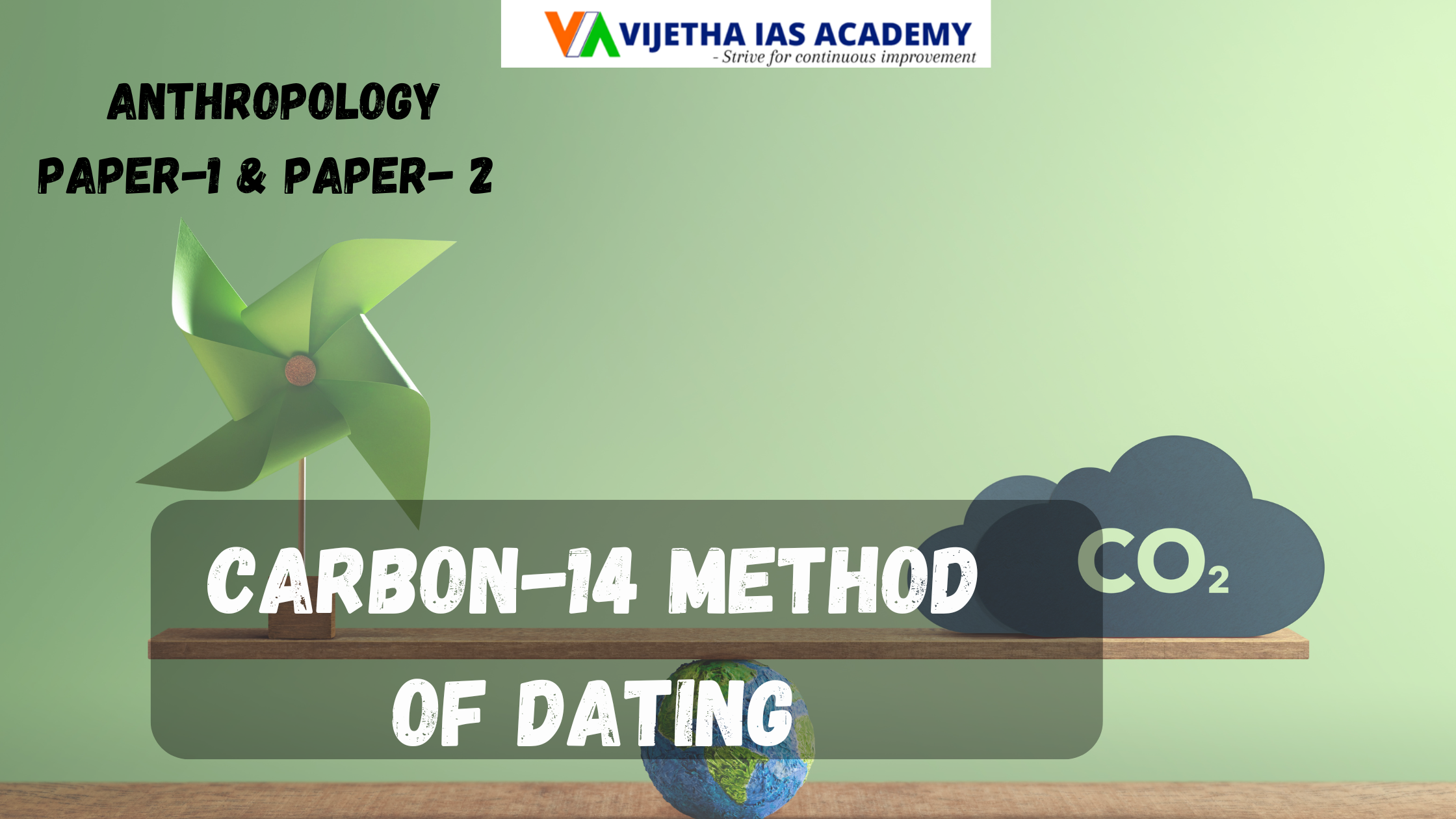
Carbon-14 method of dating? Explained for UPSC
Introduction:
The Carbon-14 method of dating, also known as radiocarbon dating, is a crucial technique in archaeology and anthropology. Developed in the late 1940s by Willard Libby, it revolutionized the way scientists date ancient organic materials. The method is based on the principle of radioactive decay, specifically the decay of carbon-14 (C-14), a naturally occurring isotope of carbon.
Main Body:
Carbon-14 is continuously formed in the atmosphere through the interaction of cosmic rays with nitrogen-14. This radioactive isotope is then absorbed by living organisms through carbon dioxide during processes like photosynthesis and respiration. While an organism is alive, it maintains a constant level of C-14 by exchanging carbon with its environment. Upon death, this exchange ceases, and the C-14 within the organism begins to decay at a known rate, called the half-life, which is approximately 5,730 years.
The basic principle behind carbon-14 dating involves measuring the remaining amount of C-14 in a sample and comparing it to the expected initial level of C-14 when the organism was alive. This comparison allows scientists to calculate the time elapsed since the death of the organism, providing an estimate of its age.
The method is particularly useful for dating organic materials such as wood, bone, shell, and other carbon-based substances. It is effective for samples up to about 50,000 years old, beyond which the remaining C-14 is too minimal for accurate measurement.
However, the Carbon-14 method has its limitations. It is only applicable to organic materials, meaning it cannot be used to date rocks or metals. Additionally, the accuracy of this method can be affected by contamination, the initial amount of C-14, and variations in atmospheric C-14 levels over time. Despite these limitations, it remains a valuable tool for archaeologists and anthropologists.
Conclusion:
The Carbon-14 method of dating is a groundbreaking technique that has significantly enhanced our understanding of human history and prehistoric life. By providing a reliable means of dating organic remains, it has become an indispensable tool in the fields of archaeology and anthropology, allowing for more accurate reconstructions of the past.
